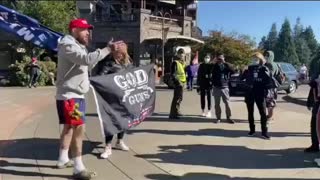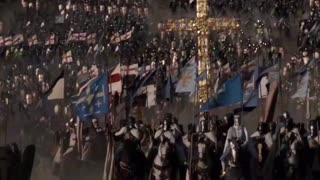Premium Only Content

BOY THESE SURE AREN'T HAPPY TIMES!BONGINO WAS RIGHT
WHO REMEMBERS GERMAN HISTORY AND WHAT HAPPENED AT THE RECCHSTAGSBRAND IN 1933?
The Reichstag fire (German: Reichstagsbrand, About this soundlisten (help·info)) was an arson attack on the Reichstag building, home of the German parliament in Berlin, on Monday 27 February 1933, precisely four weeks after Adolf Hitler was sworn in as Chancellor of Germany. Hitler's government stated that Marinus van der Lubbe, a Dutch council communist, was the culprit, and it attributed the fire to communist agitators. A German court decided later that year that Van der Lubbe had acted alone, as he had claimed. The day after the fire, the Reichstag Fire Decree was passed. The Nazi Party used the fire as a pretext to claim that communists were plotting against the German government, which made the fire pivotal in the establishment of Nazi Germany.
The first report of the fire came shortly after 9:00 p.m., when a Berlin fire station received an alarm call.[1]:26–28 By the time police and firefighters arrived, the lower house 'Chamber of Deputies' was engulfed in flames. The police conducted a thorough search inside the building and accused Van der Lubbe. He was arrested, as were four communist leaders soon after. Hitler urged President Paul von Hindenburg to issue an emergency decree to suspend civil liberties and pursue a "ruthless confrontation" with the Communist Party of Germany.[2] After the decree was issued, the government instituted mass arrests of communists, including all of the Communist Party's parliamentary delegates. With their bitter rival communists gone and their seats empty, the Nazi Party went from having a plurality to a majority, thus enabling Hitler to consolidate his power.
-
 0:41
0:41
D1ckSassy
4 years ago $0.33 earnedHappy Happy Happy Happy Happy Happy...
1.53K13 -
 0:18
0:18
StretchHealing123
4 years agoHappy Days Are Here Right Now ❤️
326 -
 0:40
0:40
ThomasNorcal
4 years agoThese are some nice animals right here.
278 -
 0:11
0:11
rumblestaff
4 years agoHappy weekend with these little ones!
1582 -
 0:50
0:50
Insaneinnovationsarmory
4 years ago $0.18 earnedPeaceful Trump Protesters counter protest BLM they aren't Happy!!
5732 -
 1:24
1:24
WSadorus55
4 years agoHappy Boy!
15 -
 1:00
1:00
Motivation
4 years agoStay happy, Be happy
46 -
 0:20
0:20
Insaneinnovationsarmory
4 years ago $0.01 earnedKYLE WAS RIGHT!
253 -
 6:09:26
6:09:26
Barry Cunningham
16 hours agoTRUMP DAILY BRIEFING - WATCH WHITE HOUSE PRESS CONFERENCE LIVE! EXECUTIVE ORDERS AND MORE!
133K50 -
 1:46:37
1:46:37
Game On!
11 hours ago $5.57 earnedPUMP THE BRAKES! Checking Today's Sports Betting Lines!
51.6K3